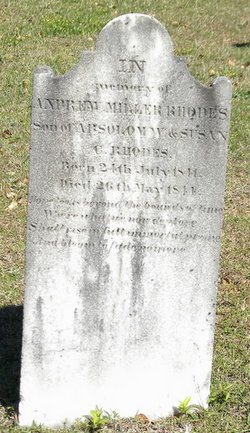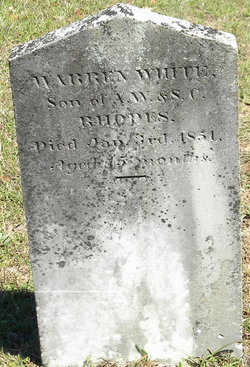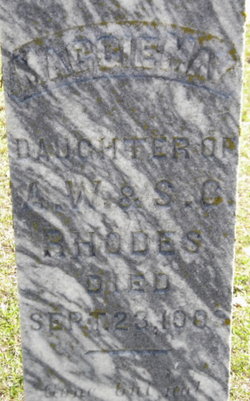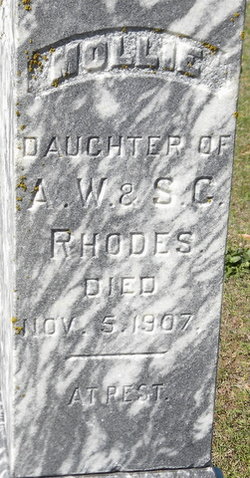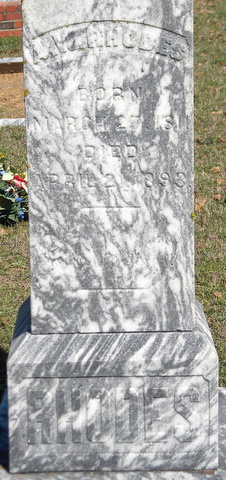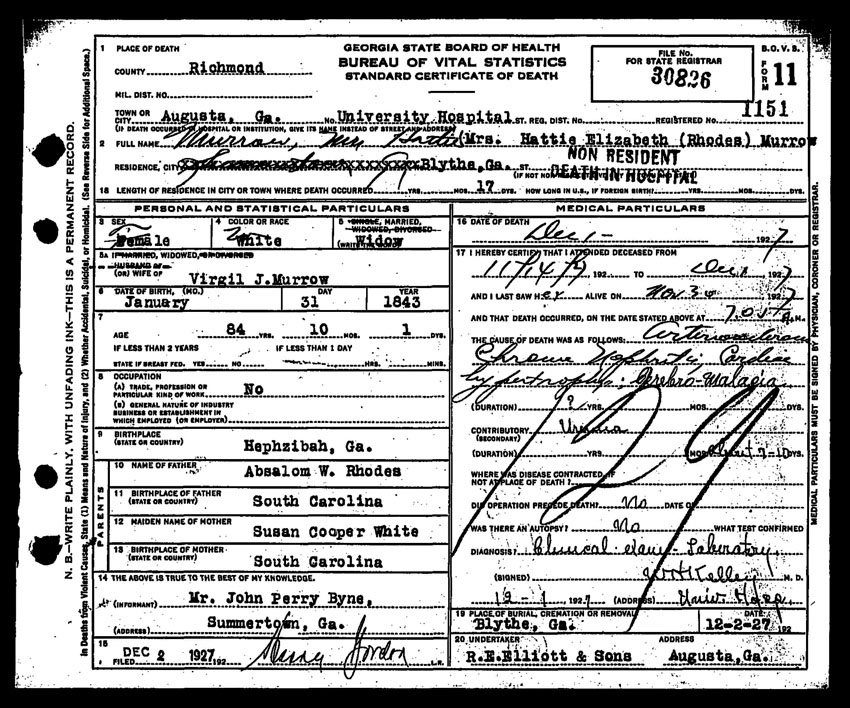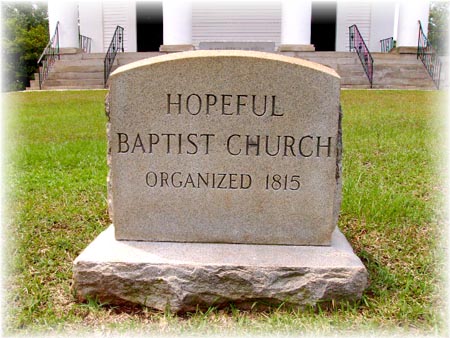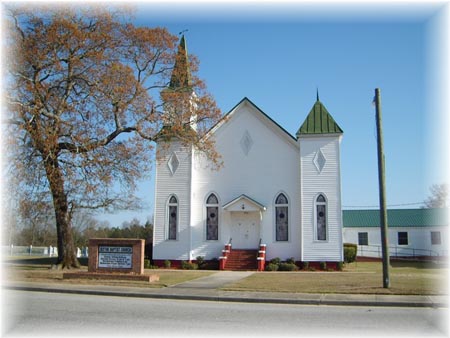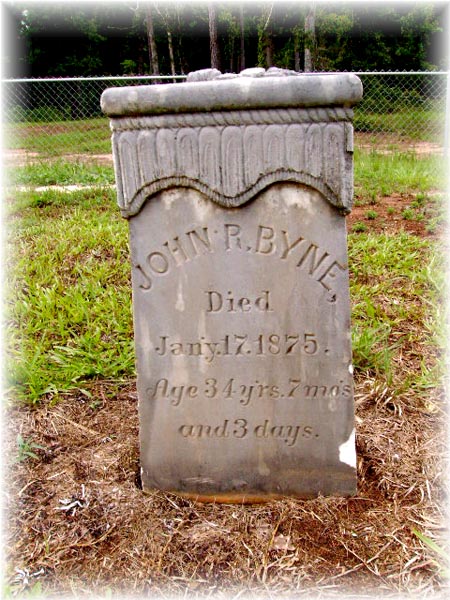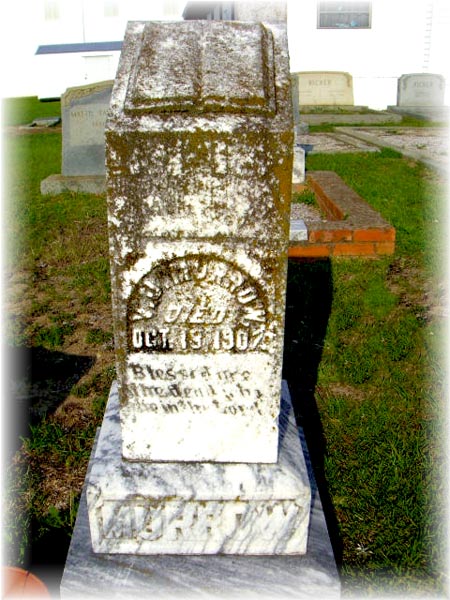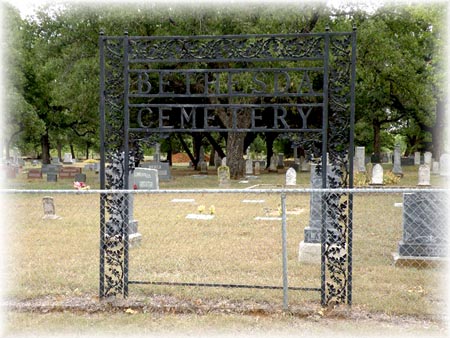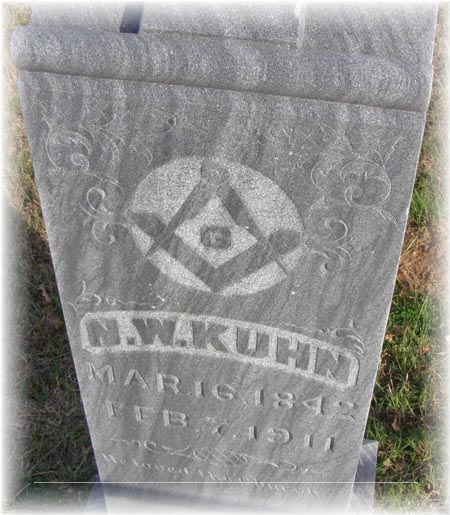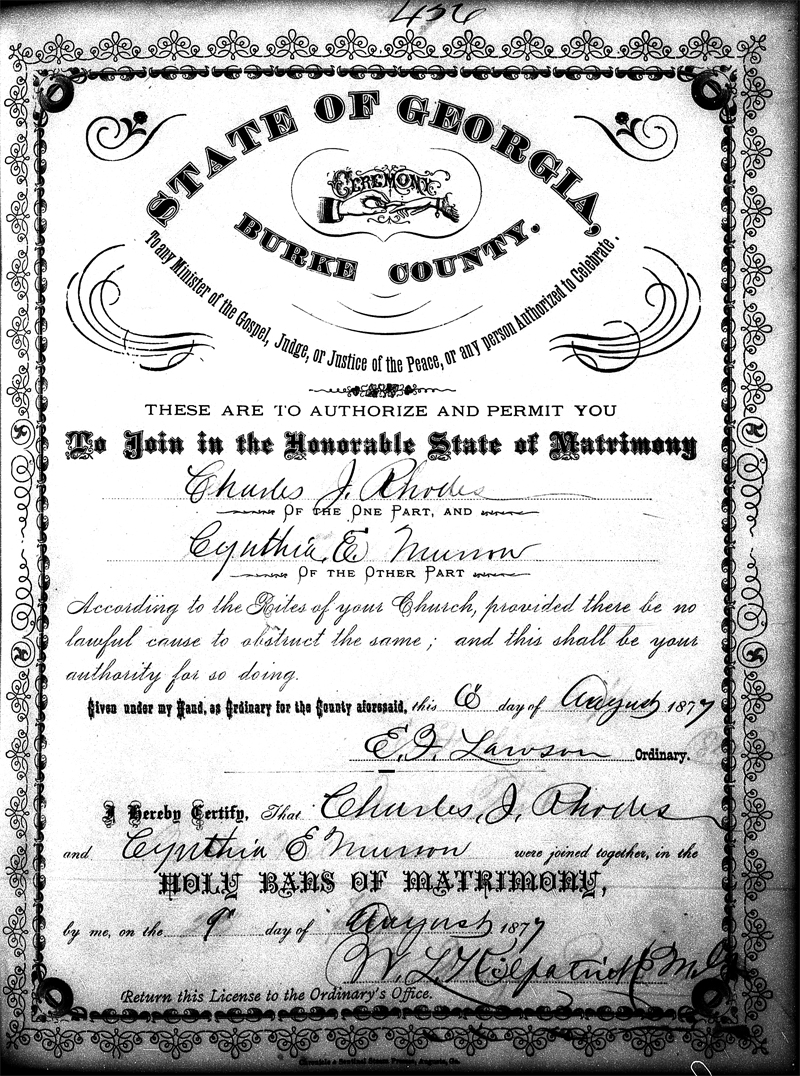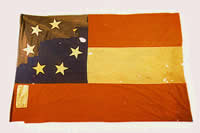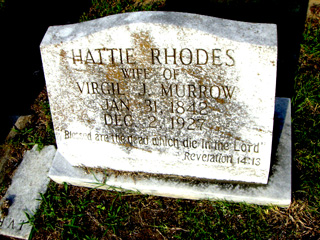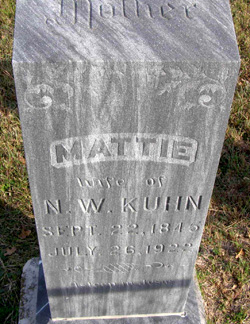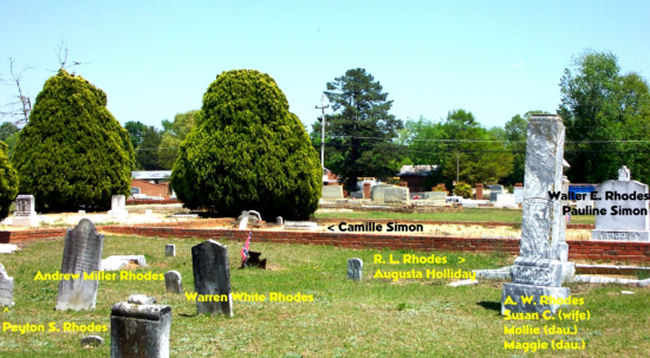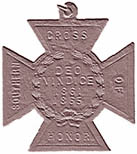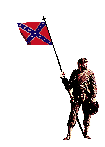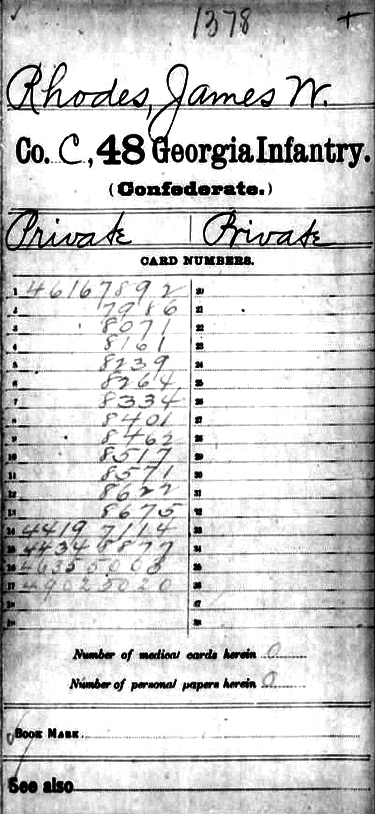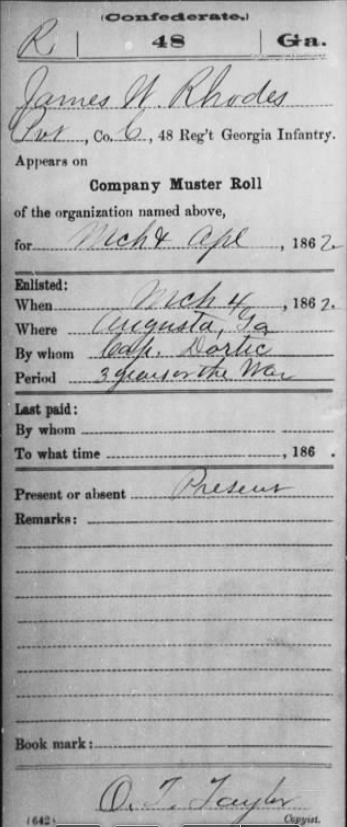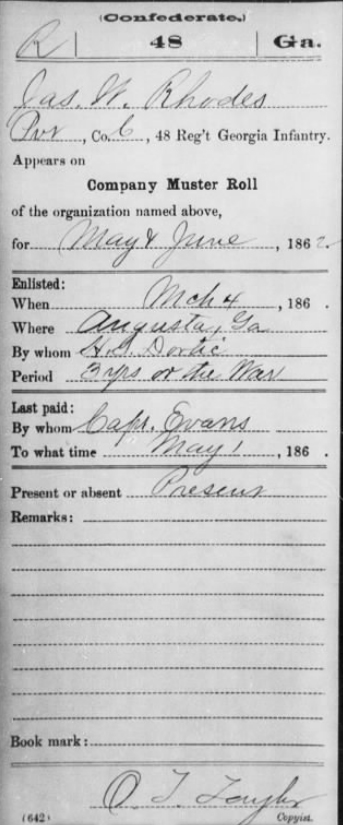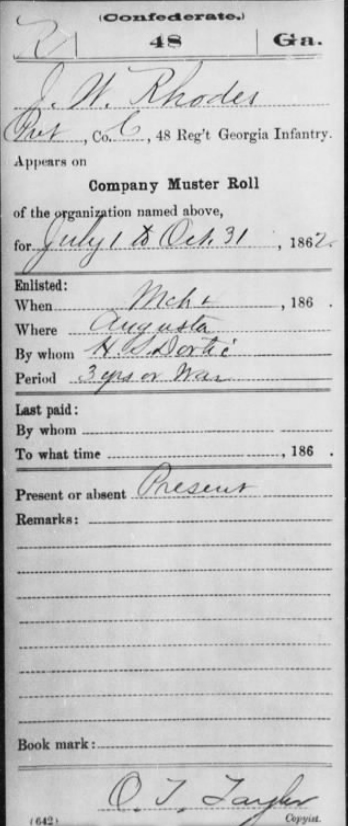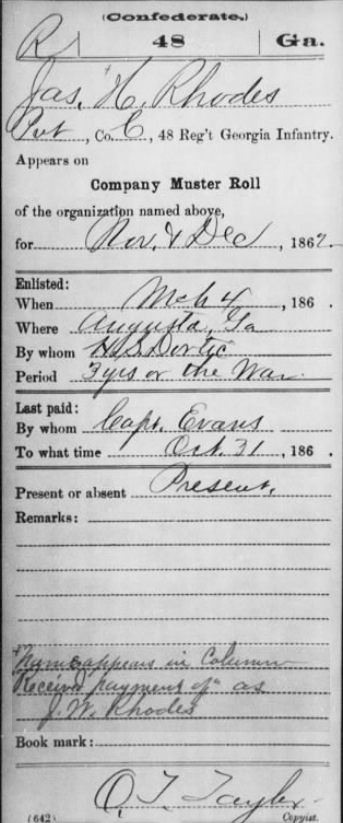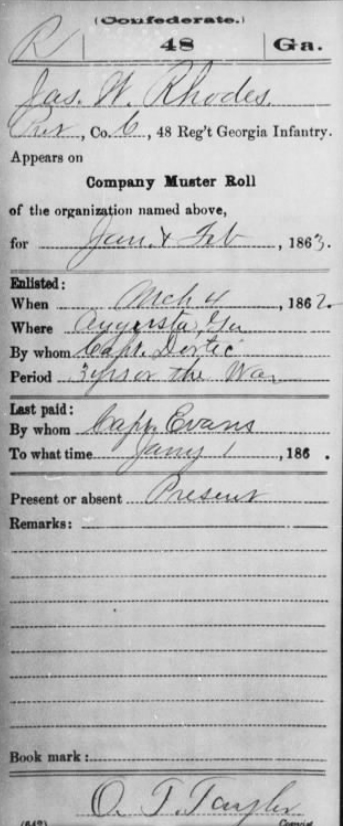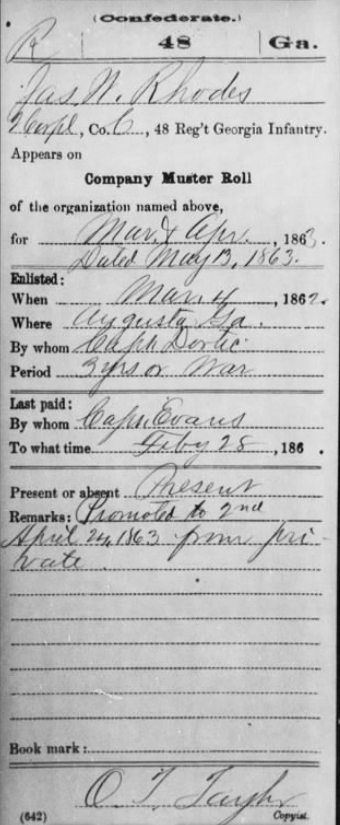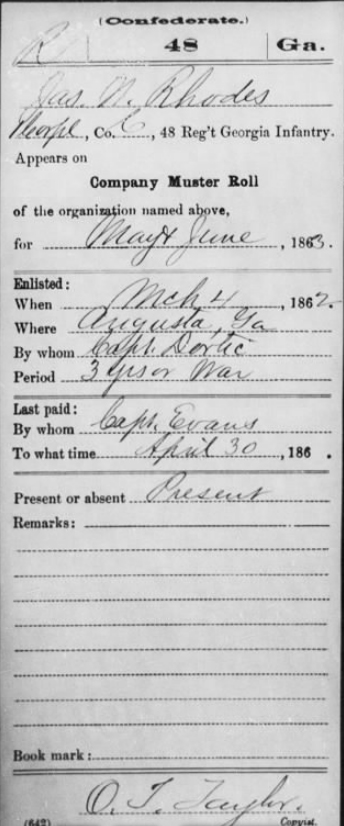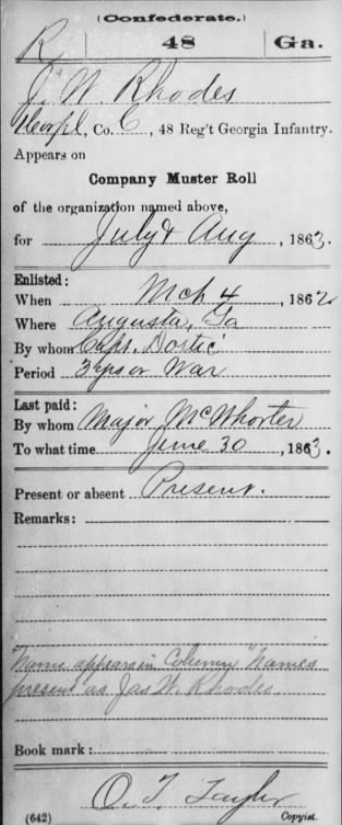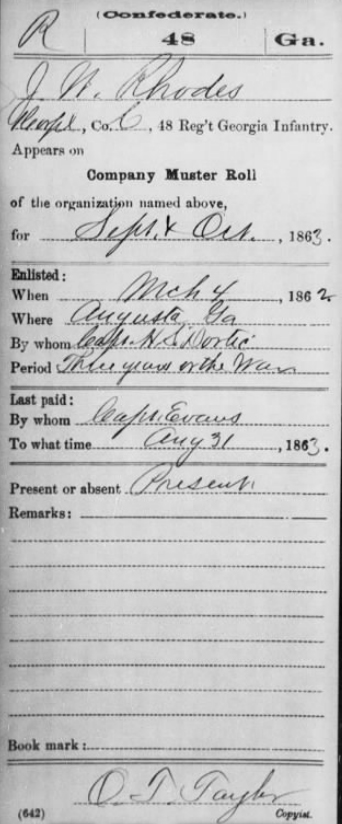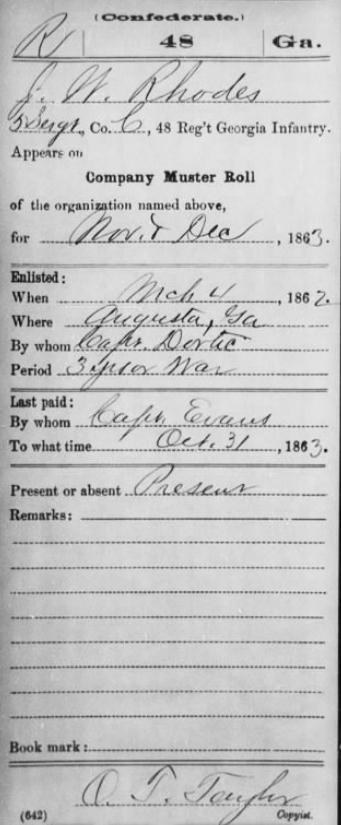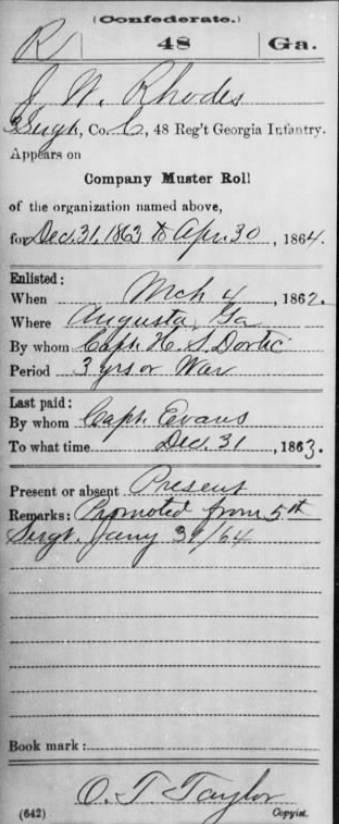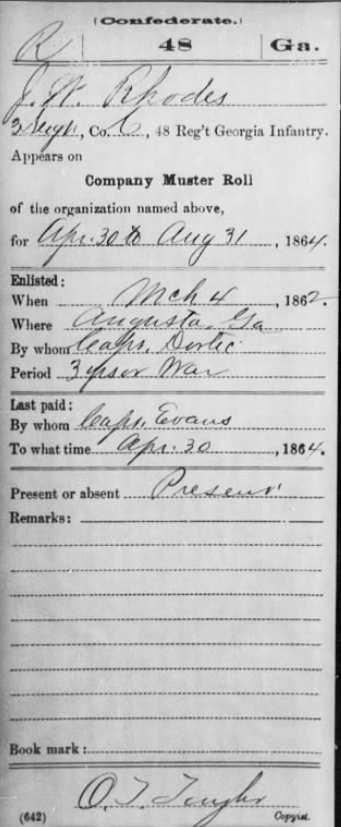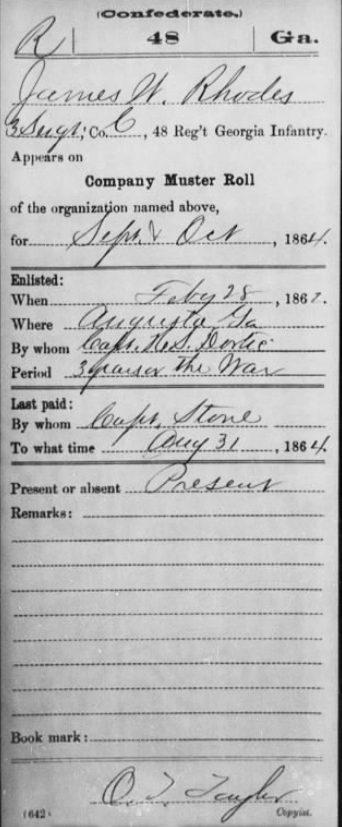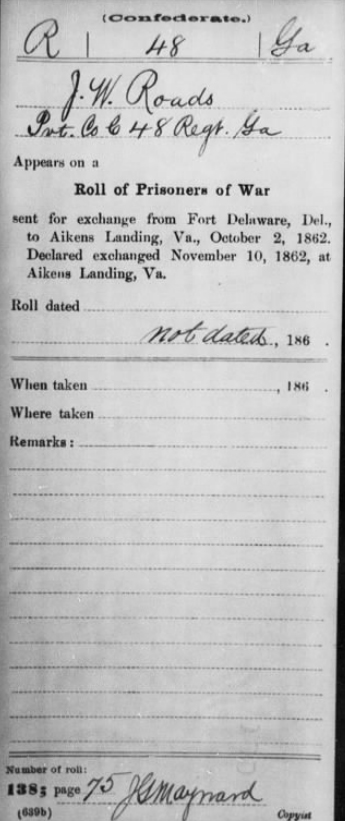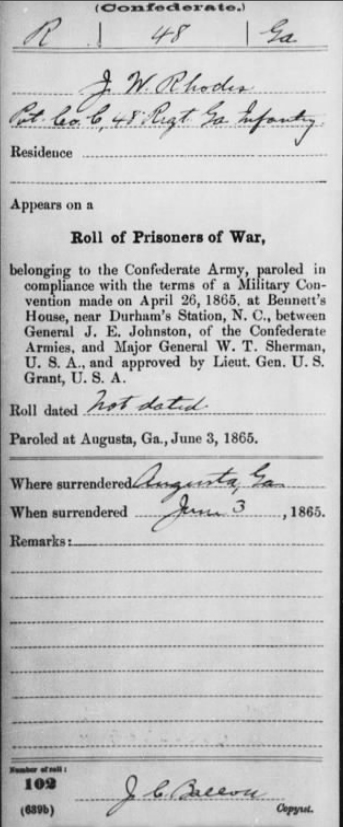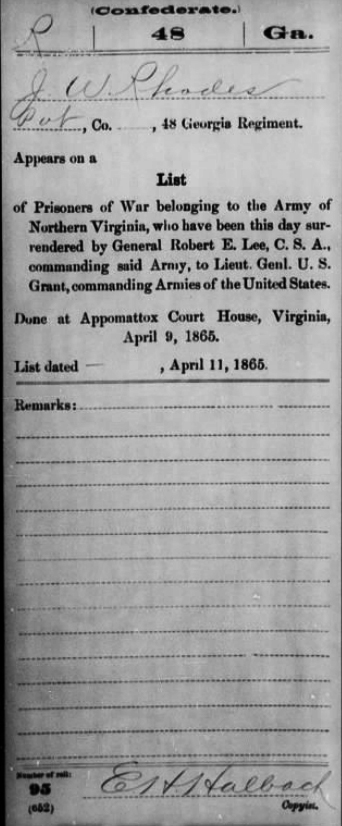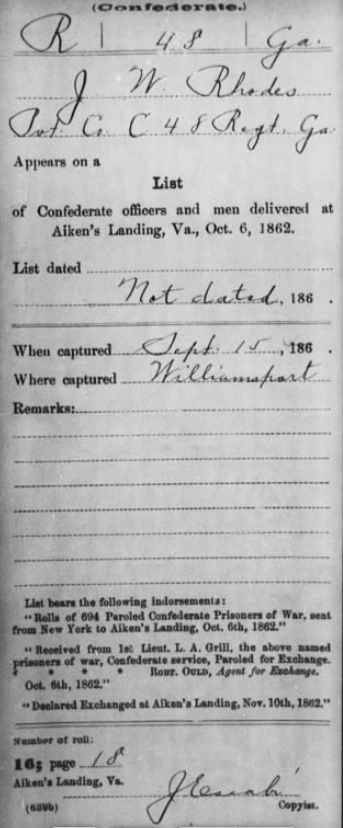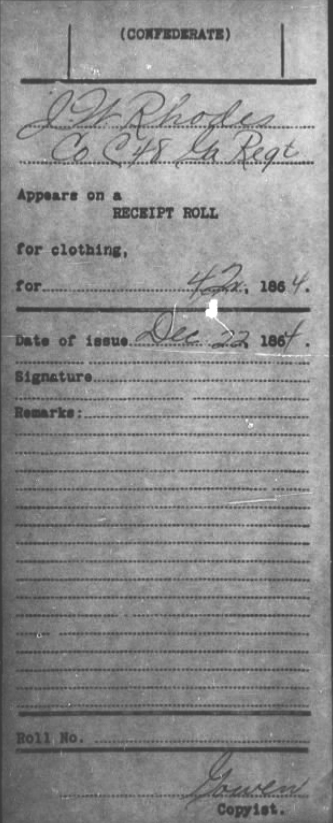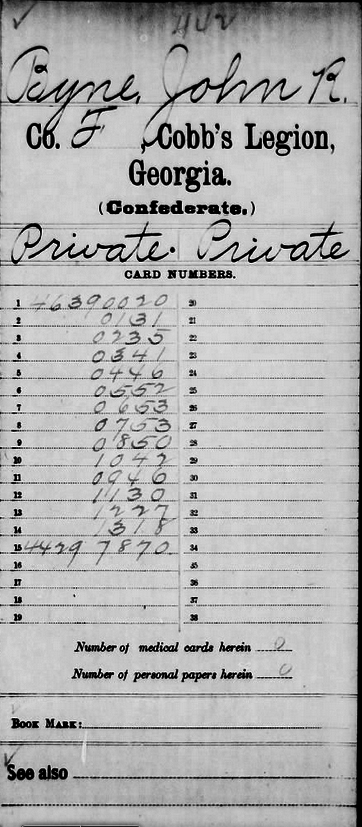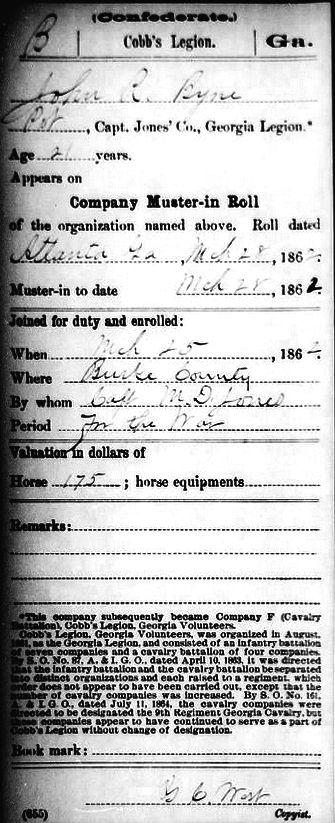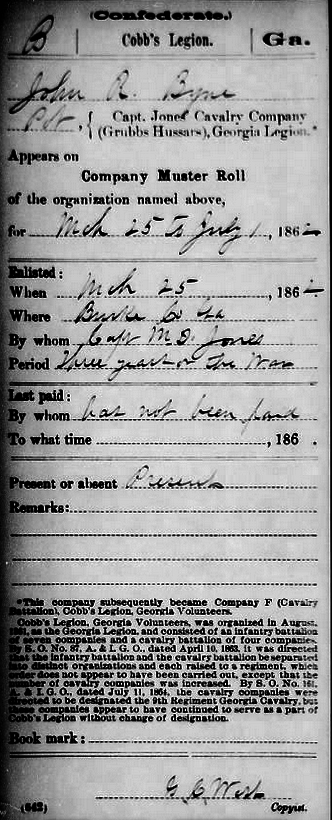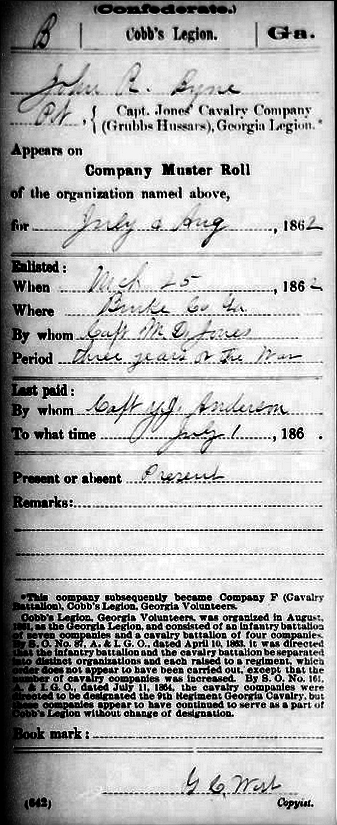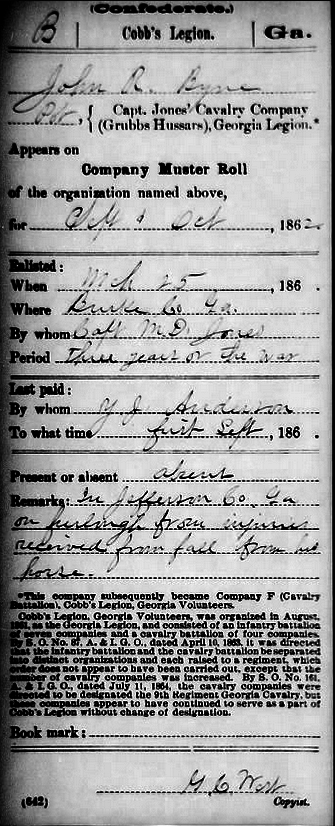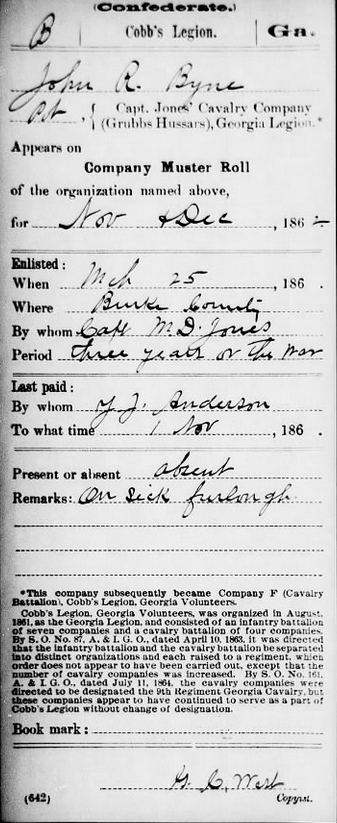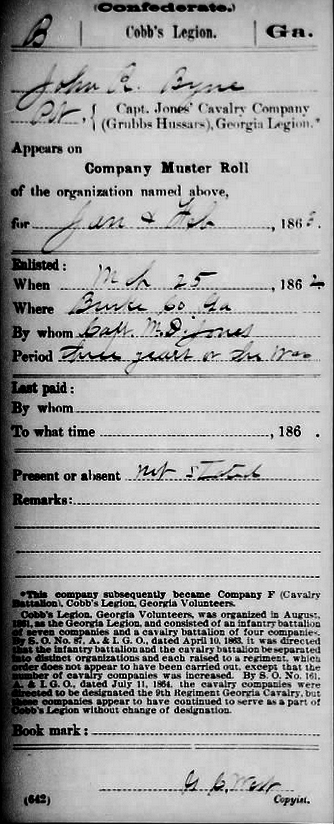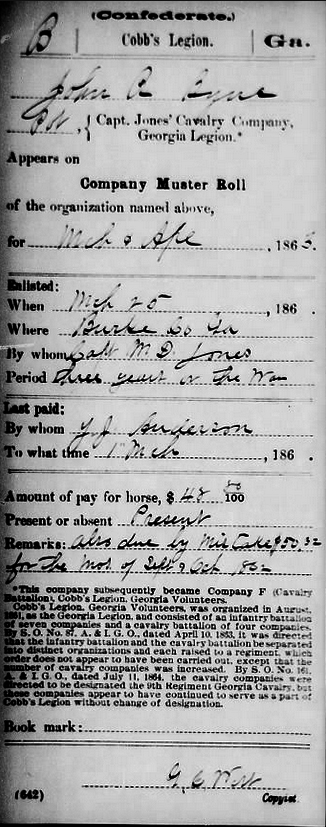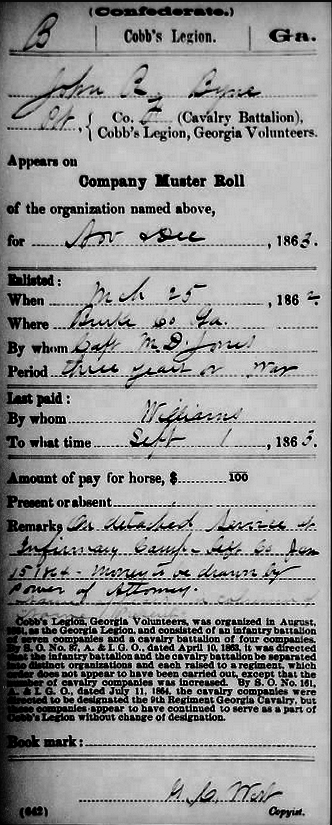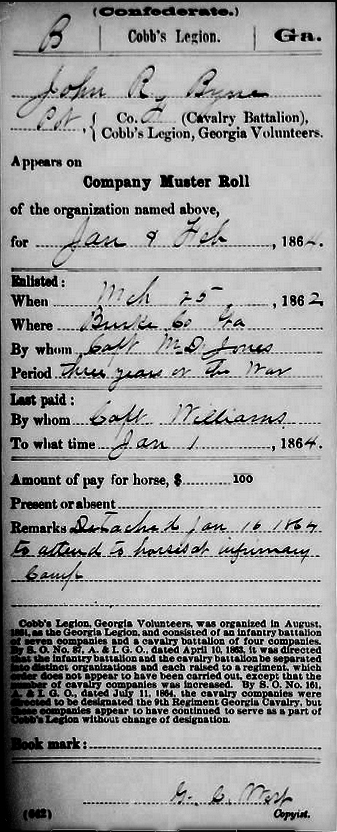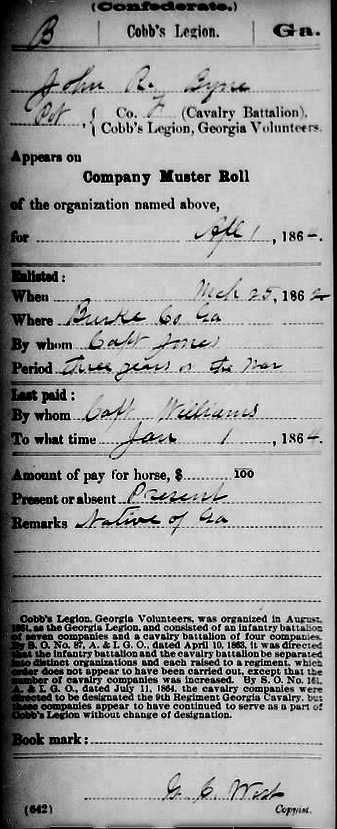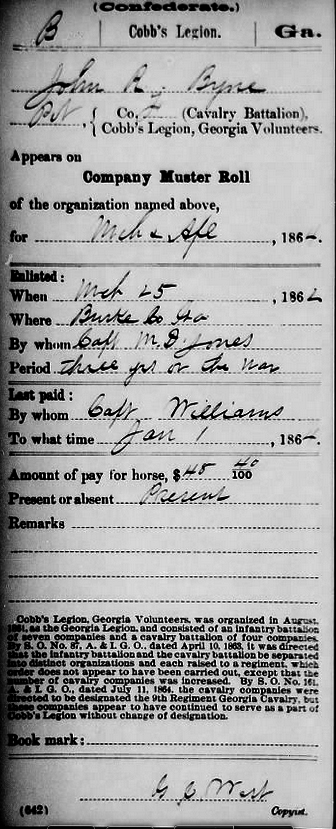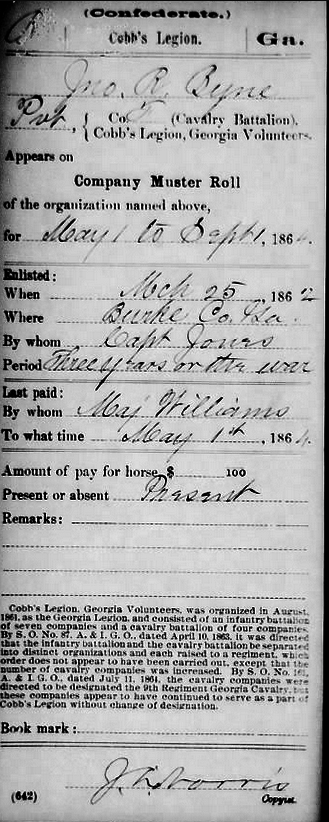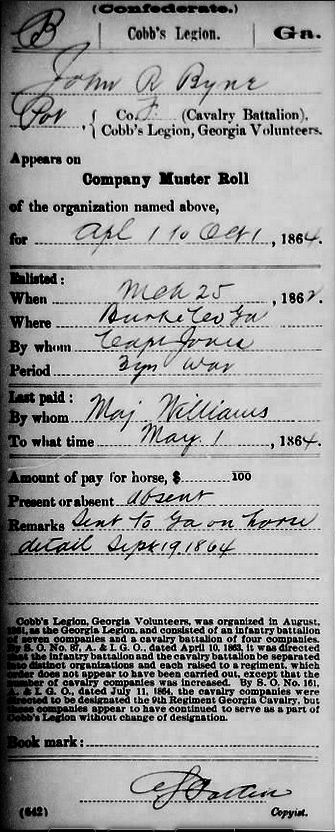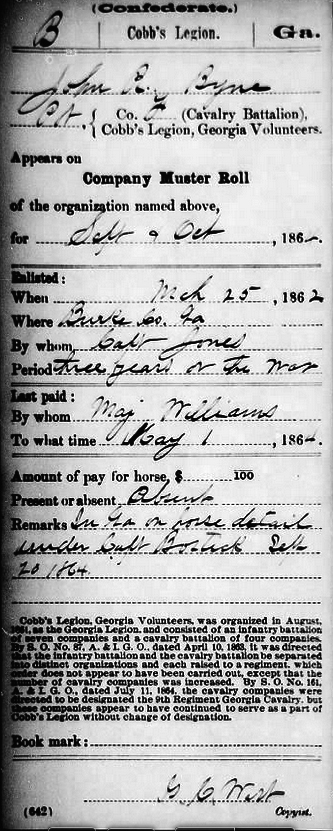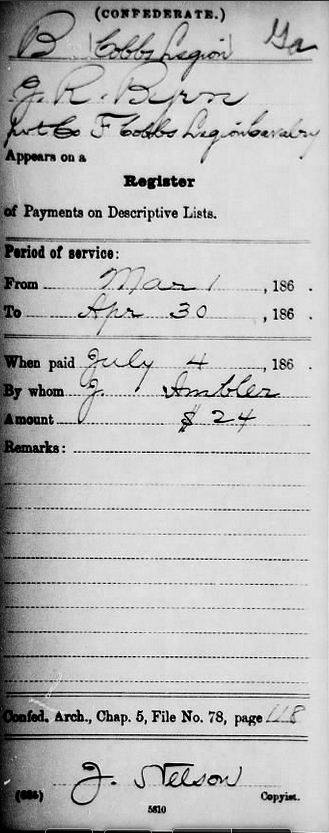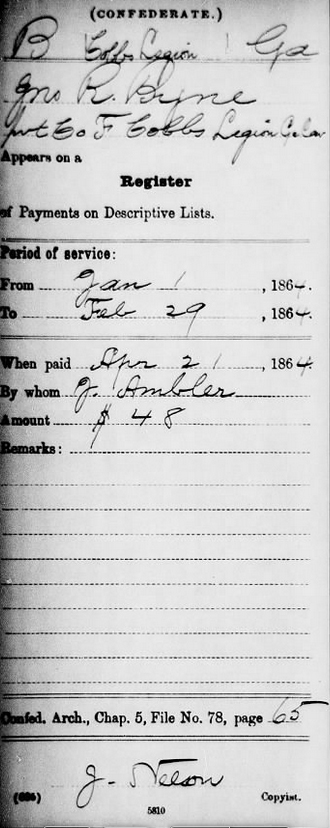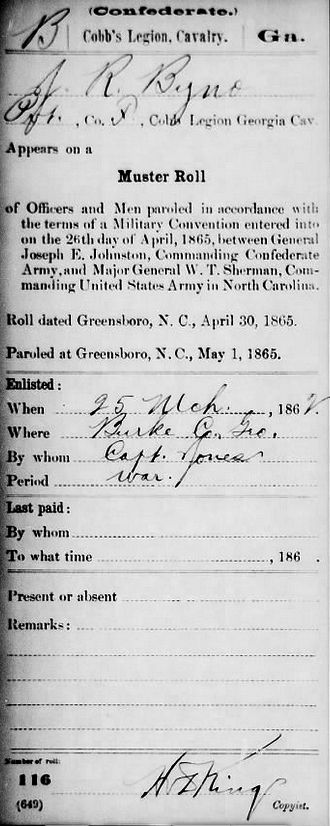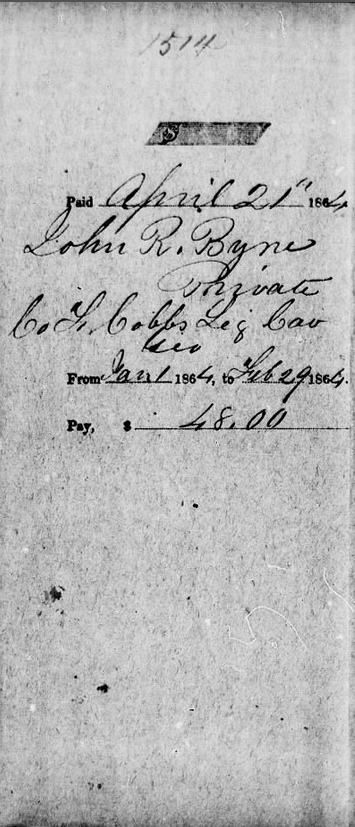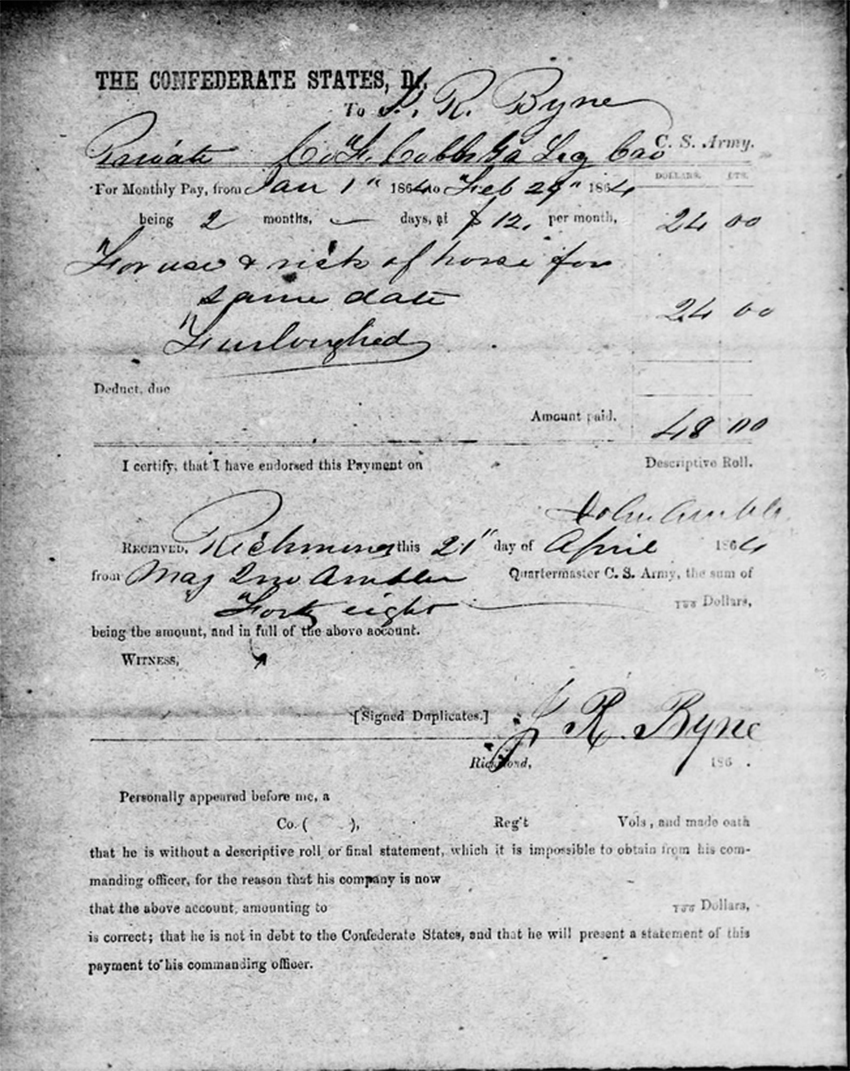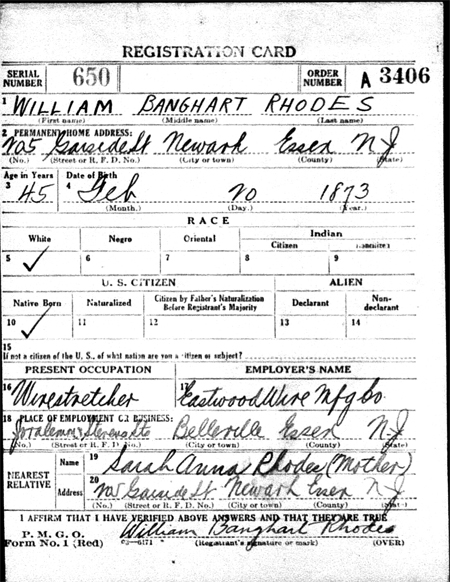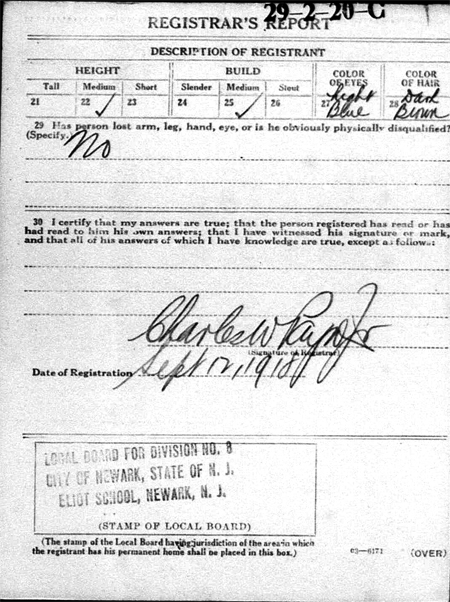Organization of the Companies of
the 48th Regiment
Company A Glascock County men-Gibson
Guards/Gibson Volunteers
Company B: Warren County men-Warren infantry
Company C: Richmond County
men-Georgia Light Guards
Company D: Burke County men-Burke Volunteers
Company E: Jefferson County men-Jefferson
Volunteers
Company F: Johnson County men battleground,
Guards
Company G: Twiggs County men-Slappey Guards
Company H: Emanuel County men-Mcleod Volunteers
Company I: Richmond County men-Wilson Tigers
Company K: Columbia County men-Hamilton Rangers
Unit
Histoary:
After the first shots were fired in Charleston SC
on April 12,1861 Georgia began to organize military units for
defense. These units were mainly State Militia called up for six
months of service. In early 1862 Volunteer Regiments were called up
and the Militia units joined the regular Confederate Army.
In the winter of 1862 the 48th Volunteer Infantry began its
organization in Milledgeville Georgia. William Gibson, a private in
the Georgia Light Guards, was elected Colonel. The Regiment was
composed of
By May the Regiment had completed several weeks of brief
basic training and was sent to Grahamville South Carolina. The units
first assignment was the defense of Charleston, South Carolina. When
the Northern Army began its advance on the Confederate Capital of
Richmond the Regiment began its march towards the battlefields of
Virginia.
Unit
Engaged at:
This regiment was
assigned to the army of Northern Virginia in the spring of 1862. It
was engaged in the campaigns of the Peninsula, Seven Days' before
Richmond, Northern Virginia and Maryland, Fredericksburg,
Chancellorsville and Gettysburg, and in the long continued campaign
against Grant from the spring of 1864 to the closing scene at
Appomattox, April 9, 1865.
The Chain of Command
General Robert E Lee
(Commander of Confederate Forces)
General James Longstreet
(Corp Commander)
General D.H. Hill / General R.H. Anderson
(Division Commanders)
General Roswell Riply (1862) / General Ransom Wright (1862)
(Brigade Commanders)
The Seven Days Campaign
The 48th Georgia, arriving in Richmond, was assigned to Roswell
Ripley's Brigade of D.H. Hill's Division of the Army of Northern
Virginia just after the Battle of Seven Pines.
At Seven pines the Commanding General of the Army of Northern
Virginia,General Joe Johnston, had been severly wounded. His
replacement was General Robert E. Lee who had been supervising the
defenses around the city. Lee drew up a daring plan to stop the
Federal adavance and drive their Forces back down the peninsula.
The 48th as part of Ripley's brigade was ordered to advance on
Mechanicsville where Lee And his Generals planned to attack the
Federal Army on June 26. After crossing the Chickahominy River the
Confederates met heavy resistance At Beaverdam creek. After several
CSA units were driven back from the creek the Fourth Brigade of A.P.
Hill's Division under General Pender was ordered to move right along
the creek. They were flooded with Federal Battery fire and became
trapped.
General D.H Hill ordered Ripley to move right in support of a rescue
of Pender by crossing the Mechanicsvill Bridge and taking position
on the Western bank at the extream right of the Confederate lines
just above the river. Federal Battery fire from the creeks oppsite
side pounded the exposed Brigades.
Ripley ordered two Regiments left, The 48th Ga & 3rd NC, to provide
support for Pender .The Men of Ripley's Brigade charged but could
not reach the creek. As the night came Ripley's men moved back
beyond the creek just as the artillery began to arrive. Ripley's men
were relieved and were moved back beyond Mechanicsville early next
morning.
Pender and Ripley lost 851 men, killed and wounded. The 44th Ga of
Ripley's brigade was decimated with 335 casualties in the first
assault.
Lee's first battle was a failure due to miscommunication and a poor
chain of command. The Federal forces however destroyed their stores
and fell back during the night toward Gaines Mill.
On June 27th heavy fighting occurred near Gains Mill where the
Federals had withdrawn the night before. Ripley and his men were
bogged down crossing the rough swampy land southeast of Old Cold
Harbor.
The 48th was sent to secure a position for Division Commander
Anderson and was in the rear.
The Confederates were able to overrun several Federal Positions .
The 48th repaired the bridge over the Chickahominy River and rested
on the next day for the climax of the battles.
The Confederates attacked the Union forces at Frazier's Farm on the
last day of June. D.H. Hill and Stonewall Jackson were on the north
side of White Oak Swamp one and one half miles from the bridge.
Richard's and Smith's Federal Divisions blocked them from the main
battle area.
The climax of the Battles of the Seven Days came on July 1,
1862. Ripley was ordered to form on the front line opposite Federal
sharpshooters. Ripley's brigade was placed on the extreme
Confederate left astride Western Run and Willis Church Road. About
five o'clock Ripley took a position in a dense cover near Malvern
Hill. Ripley was positioned to the left with the 48th on the right.
The Federals were in strong numbers and supported by artillery as
Just before seven o'clock the 48th pressed the attack forward to the
level ground. Many were mowed down by Union cannister shot. Ripley
continued to push forward under withering fire .
Couch's army inflicted 264 casualties upon Ripley's Georgians and
North Carolinians. Ripley's men fell back at dark not knowing the
extent of the Federal casualties. Col. William Gibson was injured in
the attack.
General George McLellan's Federal army was pushed completely away
from Richmond. Lee's men had achieved the South's greatest success
to date,but the campaign did not come without massive loss of life
and limb.
Ripley lost nearly 900 men - over one-third of his brigade. Three of
four colonels in the brigade were killed. Seven of eleven captains
were killed or wounded.
2nd Manassas
By the end of the summer of 1862 Robert E Lee had reorganized
the Confederate Army Creating two Corps under the Command of his
abelest Generals.
The 48th Georgia had become part of Gen. Ransom Wright's Brigade of
General R.H. Anderson's Division. The Division was attached to the
Right Wing of the Army of Northern Virginia under the command of
General James Longstreet.
Ransom Wright, a Louisville-born attorney, commanded a Georgia
Brigade composed of the 3rd, 22nd, 44th, and 48th Georgia Regiments.
Lee hoped to continue his successes of the 7 Days Battles with a
return to the scene of the Confederate Victory at Bull Run or
Manassas.
By seeming to leave Jacksons First Corp exposed, Lee hoped to lure
the overconfident Federal Commander, John Pope, into a trap holding
Longstreet's Second Corp in reserve till the Yankees had exhausted
themselves attacking Jackson's well fortified position.
On the afternoon of August 30 the 48th Georgia moved out from its
resting place on the Brawner Farm.
Advancing towards Henry Hill under heavy artillery fire the
Georgians (Three Thousand strong) pressed the attack on Federal
Forces at the Sudley road.
At the height of the fighting Wright brought the brigade to the far
right in support of Gen. G.T. Anderson's brigade, being fired on
before their lines could be formed. Mahone's brigade fell in to
Wright's right flank extending the Confederate right far beyond the
Union left . The Federal lines were caught in a deadly position, but
The Confederates failed to press the attack allowing the Union army
to regroup. The 15th and 17th Georgia regiments fell back.
Anderson's Division and the 48th held their positions.Anderson
failed to realize that an attack would have cut the Federal lines.
However his failure did not end the assault on the Federal lines.
Wright and Anderson's brigades continued to pressure the Union lines
until an hour after dark.After Wilcox's and Drayton's brigades
replaced Wright's exhausted men. Longstreet's Corps continued the
attack forcing Pope's Yankees into a retreat.,
With the Federals driven from the field Lee's forces were in
position to launch an attack deep into the North as the Federals
settled in around Washington D.C.
Antitem
Gen. Lee hoped to take the war out of ravaged Northern Virginia
where supplies were scarce. His success at the Second Manassas
allowed the army to march into Maryland. Anderson's Division moved
out from camp on the 10th of September to join Gen. McLaw's Division
in Maryland Heights. The 48th Georgia under the corps command of
James Longstreet crossed Antietam Creek and took up position in
front of Sharpsburg on the 15th.
Wright's Brigade was placed in northeastern Sharpsburg in a reserve
position along the Hagerstown Turnpike opposite Richardson's federal
brigade. The Confederate lines on the 16th were about a half a mile
east of the road near Antietam Creek.
On September 17th at dawn Anderson and his men were west of
Sharpsburg, Maryland, protecting the headquarters of R.E. Lee. The
most intense fighting took place in a small sunken roadway called
the "Bloody Lane". The roadway lay beneath ground level between
Sharpsburg and Antietam Creek forming a natural trench for its
defenders. Gen. George McLellan ordered an advance at the Rebel
center near Dunker Church.
The Confederates inflicted casualties by the thousands along the
"Bloody Lane." When a Confederate brigade fell back from their
position in the Lane the Union forces moved in to fill the void.
Gen. D.H. Hill ordered his forces to abandon the "Bloody Lane".
Gen. Anderson brought up his division to reinforce D.H. Hill. He
took cover in an orchard and unharvested cornfield nearby. French's
Federals, frustrated in not breaking the line at "Bloody Lane,"
began to fire into Anderson's men.
Gen. Wright had his horse shot out from under him , unhurt by the
shot, led his men on foot into the cornfield.
Later Gen. Wright suffered a minor gunshot wound, while Anderson was
severely wounded before his men got into the action.
Roger Pryor, a politician, took over command of the division.
The Confederate line began to collapse as New Federal forces were
sucked into the deathtrap of the Bloody Lane.
Wright along with Pryor and Featherston fell back through the
cornfield. The Confederate left under Rhodes collapsed near the apex
of the lane.
The fighting continued in and around the cornfield.
Gen. Burnside battled the Confederate forces for position at the
bridge over Antietam Creek ,holding up the advance of his division
for six hours. As the Federals began to advance toward Sharpsburg,
A.P. Hill and his light division arrived to rescue Lee's Army.
The Army of the Potomac lost 2,108 dead, 9,540 wounded and 753
missing - nearly 1/4 of their force. Lee's forces lost an estimated
1,546 dead, 7,752 wounded, and 1,018 missing - nearly 1/3 of his men
on the firing line. The day the bloodiest in American history ended
in a draw, with neither side gaining any tactical advantage.
Fredericksburg
Lee withdrew his army back into Virginia as winter approached
hoping to secure positions around the town of Fredricksburg.
The 48th Georgia was sent to the U.S. Ford on the Rappahannock
River, just above Fredericksburg.
The Union forces under Gen. Ambrose Burnside captured the city on
their march toward Richmond and Lee sent Longstreet to
Fredericksburg to check the Union forces which outnumbered the
southerners by 5 to 2.
Burnside held back his attack until December 13, 1862. Wright's
Brigade was positioned on the extreme left flank. Their position was
on a hill in the northwestern part of town overlooking the Union
reserves on the East Side of the Rappahannock River. Burnside's
Federals attempted on several fronts to break the Confederate lines.
Each time the attacks were repulsed.
That day 9,000 Federals fell at Marye's Heights. Southern losses
were slightly over 1,500. Burnside retreated across the river and
Fredericksburg fell back into the control of Lee's Army.
Chancellorsville
The first major battle of 1863 took place at a small crossroads
west of Fredericksburg named Chancellorsville.
Wright was ordered to move to Hamilton's crossing where After a
short rest the brigade moved to Gen. Anderson's headquarters on the
military road. There they bivouacked for the night. Wright received
his orders at his bivouac near Tabernacle Church about midnight. Lee
planned to send the 48th Georgia and Anderson's Brigade west to join
Mahone's and Posey's Brigade in a blocking position at the
Chancellorsville Cross Roads.
The Brigade marched in a drenching storm arriving at
Chancellorsville at dawn. Wright and Posey took the Plank Road
toward Zion Church. Mahone took the turnpike. The three brigades
pulled back four miles the next day to await the approach of the
enemy, then reported as advancing in huge numbers by the Ely's Ford
and Germana Roads.
The Confederates were positioned along the Old Turnpike and Orange
Plank Road . Wright formed a battle line along a range of hills with
his right on the Plank Road. The men were exhausted having marched
27 miles in heavy rain and through deep mud in less than 21 hours.
Wright moved the brigade back three quarters of a mile to a ridge
upon which a small hospital and old church sat. The left of the
brigade was positioned along the Fredericksburg and Gordonsville
Railroad with the right on the Plank Road. The rest of the day was
spent in the preparation of the lines for the expected battle. Gen.
"Stonewall" Jackson arrived on May 1.
About mid morning on May 1st, Jackson took a force to the south
along the Plank Road. The Georgians took the point. Slocum was
advancing his Federals east toward Jackson. After a mile or so
skirmishers of the 3rd Georgia found the front of the Federal
advance. The advance continued to within two miles of
Chancellorsville where the Federals were in force.
About 3 o'clock Wright and the 48th Georgia took the left as Posey
ran into resistance along the road to Catherine Furnance. The
Federal forces retreated . Wright then moved to the left to look for
Gen. Hooker's Federal flank and rear .
Wright took the road where he found Jeb Stuart's cavalry at
Catherine Furnance around six o'clock. Stuart reported the woods to
the north toward Chancellorsville were filled with Yankees.
Wright sent the 22nd and 48th Ga. Regiments into the dense woods.
Under heavy musket fire, the Georgians forced Williams' Division
across a clearing into a grove of pine trees. Fearing a trap the
Georgians fell back and sought the assistance of Stuart.
Artillery was finally placed into position after a difficult passage
over poor roads. Wright opened fire. The Federal artillery anwsered.
Wright decided not to send the 48th Georgia into an overgrown ravine
due to the oncoming darkness.
Wright marched by the Furnace Road rejoining the division on the
Plank Road about a mile from Chancellorsville. There Wright camped
for the night counting 2 killed and 22 wounded.
Early on the morning of the 2nd, Wright formed his brigade to the
left of the Plank Road. He remained until there until two o'clock.
Wright was then ordered to come to the aid of Posey's Brigade which
was being threatened by the Federals.
Wright and Posey attacked Sickles and Graham at Catherine's
Furnance in an attempt to protect the rear of Jackson's supply
train. The rear of the train was protected by Thomas's Brigade. As
Sickles advanced, Thomas and Archer turned back to hold off the
Federals. The Federals retreated under heavy artillery fire. Wright
pulled his men back to bivouac and eat for the first time in two
days.
Wright moved back to the Plank Road by order of Gen. Jackson at
11.p.m.. Wright's Brigade maintained their position during the night
in the woods east of Catherine's Furnace along Scott's Run. Once
again the losses were slight.
Meanwhile along the Turnpike the long march around the Federals was
nearly complete. Gen. Jackson moved ahead of his lines scouting for
the Federal positions just after dark . While returning from the
Union lines he was shot by elements of the 18th North Carolina. Who
mistook him for a Yankee General. Jackson was hit in his arm which
he lost by amputation. Jackson was dropped by the stretcher barrers
causing damage to his lung and developed phunimonia which eventually
led to his death three days later and some say, the death knell of
the Confederacy.
A series of attacks and counter attacks raged along the Turnpike
early on the morning of the 3rd. Wright brought his brigade from the
Plank Road toward the Furnance to support Posey in position about a
half mile southwest of Chancellorsville Crossroads.
Wright was assigned to cover the area between Mahone on the right
and Posey on the left. The brigade with its 1600 men were stretched
over a mile. He put forward a skirmish line to connect with the
adjoining brigades.
Wright's men rushed forward to press Geary's Federals from the
Fairview clearing. But were held back by what Wright called "the
most terrible fire and artillery I had ever witnessed." Wright had
to deal with friendly incoming artillery fire for several minutes
while having lost sight of Mahone on his right. The terrian was
dense and no brigade could find the other.
Wright moved to the left to find Posey as the Federals were swept
away. Wright's Georgians , coming from the south, was the first to
reach the clearing. Lee rode upon the scene where he found Wright's
men celebrating their victory. Lee had never seen men more jubilant.
After the fighting, which lasted until dusk, the Federals were
driven out of Chancellorsville. In afternoon Wright's men followed
Posey toward the United States Ford where they camped . Wright's
brigade did manage to capture the entire 700 men of the 27th
Connecticut Regiment in the early afternoon of the 3rd.
The brigade lost 17 killed and 163 wounded, including some of his
best officers.
By night fall Hooker pulled all of his Federals back towards
Fredericksburg. Lee continued to press the attack sending Anderson's
Division to the River Road opposite the Federal left with orders to
guard the road and to disrupt enemy communications.
Wright was ordered to move back toward Chancellorsville until he
reached the Turnpike Road and down the turnpike to Salem Church.
Anderson arrived at Salem Church at 11:00 a.m. and moved into place
around noon. An attack was planned upon the signal of three rapidly
fired guns. The march took the men through dense woods and shrubbery
to the southeast to a point along the unfinished Richmond,
Fredericksburg, and Potomac Railroad. At that point they would join
with Hoke's Brigade of Early's Division in an effort to seal off a
Union escape to the south. Anderson's men were completely exhausted
after a solid week of fighting.
Anderson attacked Brook's Federal division with Wright on his
left . Wright's men came down a ravine to flank Federal
sharpshooters behind the Downman house. Entering a field behind the
house they came under cannon fire enfilading their line from the
right. Wright kept adavancing, driving the Federals from the field.
Wright remained in that position until dark.
Between eight and nine o'clock Wright followed Posey on his left up
the Plank Road toward Bank's Ford. After three miles of marching the
brigade halted and camped for the night.
The losses that day were considerable with 6 killed and 83 wounded.
Lee's plans to attack the retreating Federals on the 4th never fully
materialized. The battle ended in a Confederate Victory ,but the
death of Stonewall Jackson was a Terriable loss to Lee and his Army.
Wright's brigade during the four day battle had 25 men killed and
271 men wounded.
Lee's success at Chancellorsville convinced him that an offensive
into Pennsylvania might be successful. His army badly needed
suppiles which might be found in Northern territory and again he
hoped to remove the fighting from Virginia.
Lee moved his army around the Federal western flank in early
June.The stage was set for the turning point of the war.
Gettysburg
Using the Western Virginia Mountains to screen their movements,
Lees forces moved North .
General Hooker also slowly began to send his army in pursuit of the
Confederates.
Lee had detached his Calvary under General Stuart to ride around the
Federals keeping only a small detachment to guard the mountain
passes. Because of this Lee didn't have a clear idea of the exact
location of the Federal Army
On June 27 A.P. Hill arrived in Chambersburg PA. Upon Hearing that a
supply of shoes for his ragged troops might be located nearby the
army began to move towards a small village called Gettysburg.
The first Confederate units to arrive found a small Federal Calvary
unit under command of General John Buford digging in on the ridges
around the town. More units ,Both Federal and Confederate ,continued
to arrive until each army was almost full strength.
The Federals were positioned along the high ground and hills first
held by the Union Calvary
The morning of July second Gen Andersons men were positioned in the
left center with Pender to the left and McLaws and Hood to the
right. General Lee ordered attacks along the Emmitsburg road.
Heavy Fighting occurred at Little Round Top, the Peach Orchard and
Devils Den. Around midday Wright was told to form up the entire
division for an attack after noon. Each brigade would lead from the
right.
By the middle of the afternoon the 48th was in position on a ridge
overlooking Humphrey's Division across the Emmitsburg Road. The
ridge, known as Seminary, was named for the Lutheran Seminary
situated at its northern end. Wright's men arrived and were
positioned at the far western end of the ridge.
Longstreet and Hood attacked at the Devil's Den and Big Round Top at
four o'clock. Another attack came at the Wheat Field and Little
Round Top an hour later.
Wilcox and Lang's Brigades of Anderson's Division attacked in
concert with McLaw's Division at the Peach Orchard at six o'clock.
At six thirty Anderson sent his three remaining brigades, Wright,
Mahone, and Posey, to attack the center of Cemetery Ridge. Wright's
men were deployed from left to right as follows: 48th Georgia, 3rd
Georgia, and 22nd Georgia. The 2nd Georgia was deployed in front as
skirmishers. A few hundred yards away on the farm of William and
Adelina Bliss four New Jersey companies were holding the farm
buildings.
Wright's Brigade with its 1600 Georgians began the attack about
six-forty-five in a quick step march across a mile-wide open field
toward a small dip in the terrain. The advance went smoothly until
the men came within musket range of the Emmitsburg Road. There they
encountered a strong body of infantry behind a fence near and
parallel to the road. The skirmishers from the Second Georgia were
preparing the way. As they passed north of the Cordori house they
came under Union artillery fire. The battle line moved rapidly
toward the ridge. Wright later recalled "We were in a hot place, and
looking to my left through the smoke, I perceived that neither Posey
nor Mahone had advanced and that my left was totally unprotected."
Wright sent a courier to Gen. Anderson, who replied "both Posey and
Mahone had been ordered in and that he would reiterate the order."
As Wright passed the Bliss' yard only a portion of Posey's men were
in support of his attack. There was a brief and furious fight at the
Emmitsburg Road. Wright's right wing passed the Cordori House with
little resistance. With half of their men down and both of their
flanks turned, Gibbon's men pulled back toward Cemetery Ridge.
The attack was directed toward a battery between a small clump
of trees and Ziegler's Grove on the ridge to north.
Wright's brigade would fit in between the trees and the grove. The
six cannon of Brown's Rhode Island Battery pounded Wright with case
shot and then canisters. Wright's Brigade paused, closed their
ranks, and moved forward.
The Federals were pushed from their second line of defense behind a
stone wall some one hundred yards or more from the road.
That wall would come to be known as the high water mark of the
Confederacy.
The Battery moved further up the hill under pressure from Posey's
19th Mississippi. The 48th attacked Gibbon's lines in hand to hand
fighting. With well directed fire Wright's men drove the cannoneers
from their guns. As Wright's men captured the Napoleons of the Rhode
Island Battery they were pelted with canister and small arms fire
from the ridge, one hundred yards away.
The Georgia Brigades crossed the fence and rushed up the ridge
reaching the crest as the Federals fell back.
As the Confederate Flag was planted on the ridge Wright's men were
jubilant. The point where they stood would be the objective of Lee's
attack next day. Wright again requested support. Wilcox and Lang had
been forced from the field to the south, Posey was stuck in the
field to the north. And Mahone would not budge his brigade from
Seminary Ridge - despite the repeated urging of Gen. Anderson.
Under cover of rocks and woods the Federals counterattacked. Wright
was underfire by the 69th Pennsylvania in the front and suffered
three effective volleys upon his unprotected flanks by the 106th
Pennsylvania and the 13th Vermont.
Wright in his report of the action said "We were now in a critical
condition. The enemy's converging line was rapidly closing upon our
rear. A few more moments and we would be completely surrounded.
Still no support could be seen coming to our assistance, and with
painful hearts we abandoned our captured guns, faced about and
prepared to cut our way through the closing lines in our rear. This
was affected in tolerable order but with immense loss."
The Federals launched a savage bayonet charge on the Georgians. The
Federals rushed back to the abandoned guns and poured a severe fire
of grape and cannister shot into the thinned CSA ranks. Wright's men
reformed along a fence line firing one volley. Wright had lost half
the brigade on the ridge.
They continued to retreat under heavy fire from Cemetery Ridge. The
48th reformed and fired a second volley. The 106th Pennsylvania, ,
caught up with the 48th Georgia just before the Emmitsburg Road.
Col. William Gibson and nearly six dozen of his men were captured.
The Pennsylvanians halted and did not pursue the remaining men into
the woods. About seven-thirty Gen. Webb recalled his men from the
road.
The 48th Georgia's advance was the closest Lee's men came to
breaking the Federal center at Gettysburg.
Wright maintained " I have not the slightest doubt that I should
have been able to maintain my position on the heights, and secure
the artillery, if there had been a protecting force on my left, or
if the brigade on my right had not been forced to retire.
Wright's men captured twenty artillery pieces, with the 48th
capturing four of those.
The 48th suffered the heaviest losses. Being on the extreme left
they were exposed to heavy direct and enfilade fire.
The regiment suffered the loss of 54 killed, 65 wounded, 38 wounded
and captured, 43 captured, and 4 deserted.
Col. William Gibson was wounded and left on the field. Five of six
captains were lost. Eleven lieutenants out of seventeen were lost.
The regimental colors were shot down seven times. The heaviest
losses, sixteen percent, were suffered by the Battle Ground Guards.
Losses were also heaviest among the Jefferson Volunteers (Co. E),
the Wilson Tigers (Co. I), and the Hamilton Rangers (Co. K).
The 48th was pulled back to the head waters of Piteers Creek near
its original battle line. Longstreet placed the decimated brigade in
the rear as a reserve for Pickett's Brigade.
On July 3rd Lee again attacked the Federal center on Cemetary
Ridge, reasoning that if Wrights Brigade had taken it without
support ,several divisions would be able to hold the position.
Picketts Brigade was to lead the attack.
Forty Seven Regiments were lined up for the attack. The survival of
the Confederacy was at hand.
Pickett's men were slaughtered in the open field and upon the ridge
,as Lee watched in horror, as only a few gained the crest before
being driven back.
Most of the men left in Wright's brigade were ready to go back to
the ridge. Longstreet convinced Anderson that another attack would
be a waste of life.
Wright's Brigade was brought up in the late afternoon to cover the
retreat. The brigade was sent to reinforce Wilcox in the event of a
Federal counterattack. At dark Wright moved back to his original
position.
As the day ended Lee began making plans to pull his battered army
southward and home to Virginia.The losses in Pennsylvania could not
be replaced and news soon reached the East of another Federal
Victory in the West which cost the Confederates control of the
Mississippi. It was the beginning of the end for Lee and his army.

